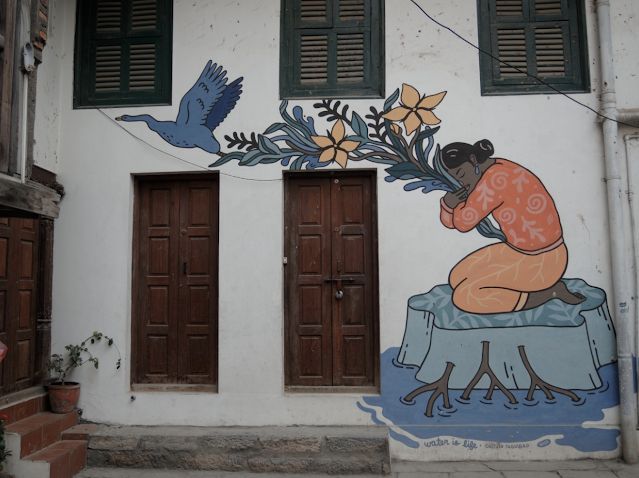Before we spend the next 10 weeks unpacking the topic of water and sanitation in Africa, I think it is important to start off with critically reflecting upon how knowledge and ideas about Africa and water and sanitation in Africa have been shaped through the Western, colonial lens. Wainaina's article 'How to write about Africa', brings this very issue to the forefront. His bold use of exaggerations and sarcasm exposes general conceptualisation of Africa:
"Among your characters you must always include The Starving African, who wanders the refugee camp nearly naked, and waits for the benevolence of the West... She must look utterly helpless."
One common theme that runs along the article is the (perhaps sarcastic) glorification of the West in which it is portrayed as the 'hero' and 'saviour' of the "doomed" Africa:
"Do not feel queasy about this: you are trying to help them get aid from the West."
(Wainaina, 2005)
Through the satire, Wainaina hints at post-colonial critiques of mainstream institutionally top-down led development initiatives that have portrayed Africa as helpless in order to shape them into "one country" that requires solutions and interventions of the West (Wainaina, 2005). Dominant discourses often accentuate the institutional construction of the 'third-world', misrepresenting Africa as in dire need of help through the Western lens.
The colonial history of water and sanitation
Don't be fooled into thinking water and sanitation has no part to play in this. On the contrary, the colonial initiatives of water and sanitation in Africa have contributed to this narrative. As Europe began to colonise parts of the world, they brought with them their "modern ideals in the form of infrastructure" (
Nilsson, 2016). The Dutch East Indies introduced the first water supply to Batavia (now known as Jakarta) in 1873. Similarly, the French colonial government introduced a piped water system in Saint-Louis du Senegal in West Africa in 1886, around the same time the British began to implement sanitary measures in Bombay Nilsson 2016). These early water and sewage systems were, however largely associated with race, and were denied access to local populations. This racially biased system consequently facilitated the dramatisation of these populations (including Africans) as being regarded as 'uncivilised' and "backwards" due to their 'poor hygiene habits' (Nilsson 2016). This is another conception Wainaina exaggerates in his article, highlighting how colonial practices of water and sanitation have only served to construe Africans in a certain way through the imperial lens.
It can be ironic to think of the West as a sort of 'hero' when you could argue that it is their colonial work that had left Africa with a "bad seed for development" (Ibid). What remained after decolonialisation were the ideals that modernity and progress were closely tied with large-scale water systems of the West. There were therefore aspirations to provide the same infrastructure to local populations:
"The ability of Africa to borrow advanced technological knowledge, modern methods... Provides the opportunity to leap over many of the hurdles that have restrained development.
(Republic of Kenya, 1965)
This quote from the Kenyan government upholds the mentality that progress comes hand-in-hand with western infrastructural practices of water and sewage systems. If this is the case, it might also be that Africa views their world "through the lenses of Western modernity" (Nilsson 2016). Post-colonialism, European water supply and sewage systems were however, unsustainable due to the financial and technical capacity to uphold it. Being racially biased, also meant that the systems were not designed to provide every individual with equal measures of water. Early water and sewage systems exacerbated water inequalities within local communities and often misaligned with their needs. The desire to continue using western norms and practices risks holding back innovations in water and sanitation that could actually fulfil the needs of communities across Africa.
In the next few weeks, in addition to unpacking the development of water and sanitation in Africa, we must also acknowledge and be aware of factors holding back the innovation of infrastructure and the lens through which we explore this topic if we are to truly understand water and sanitation in Africa.



This comment has been removed by the author.
ReplyDeleteKatie, I really think you have a very clear and concise argument and your 'voice' is really coming through in your writing. Also, great use of quotes! Please take a quick look at the blog FAQs (Task 1.1.) to see how to reference in the text. The FAQs detail how to add references as a hyperlink. Use this also for your references to 'ibid'. (GEOG0036 PGTA)
ReplyDelete